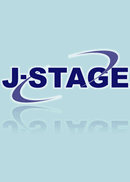Volume 31, Issue 3
Displaying 1-17 of 17 articles from this issue
- |<
- <
- 1
- >
- >|
-
1979Volume 31Issue 3 Pages 299-310
Published: September 20, 1979
Released on J-STAGE: February 19, 2013
Download PDF (2381K) -
1979Volume 31Issue 3 Pages 311-320
Published: September 20, 1979
Released on J-STAGE: February 19, 2013
Download PDF (2138K) -
1979Volume 31Issue 3 Pages 321-329
Published: September 20, 1979
Released on J-STAGE: February 19, 2013
Download PDF (1760K) -
1979Volume 31Issue 3 Pages 330-357
Published: September 20, 1979
Released on J-STAGE: February 19, 2013
Download PDF (33354K) -
1979Volume 31Issue 3 Pages 358-376
Published: September 20, 1979
Released on J-STAGE: February 19, 2013
Download PDF (10345K) -
1979Volume 31Issue 3 Pages 377-394
Published: September 20, 1979
Released on J-STAGE: February 19, 2013
Download PDF (6598K) -
1979Volume 31Issue 3 Pages 395-397
Published: September 20, 1979
Released on J-STAGE: February 19, 2013
Download PDF (537K) -
1979Volume 31Issue 3 Pages 398-405
Published: September 20, 1979
Released on J-STAGE: February 19, 2013
Download PDF (1192K) -
1979Volume 31Issue 3 Pages 406-409
Published: September 20, 1979
Released on J-STAGE: February 19, 2013
Download PDF (955K) -
1979Volume 31Issue 3 Pages 410-412
Published: September 20, 1979
Released on J-STAGE: February 19, 2013
Download PDF (426K) -
1979Volume 31Issue 3 Pages 413-415
Published: September 20, 1979
Released on J-STAGE: February 19, 2013
Download PDF (454K) -
1979Volume 31Issue 3 Pages 416-418
Published: September 20, 1979
Released on J-STAGE: February 19, 2013
Download PDF (550K) -
1979Volume 31Issue 3 Pages 419-420
Published: September 20, 1979
Released on J-STAGE: February 19, 2013
Download PDF (300K) -
1979Volume 31Issue 3 Pages 421-423
Published: September 20, 1979
Released on J-STAGE: February 19, 2013
Download PDF (447K) -
1979Volume 31Issue 3 Pages 424-426
Published: September 20, 1979
Released on J-STAGE: February 19, 2013
Download PDF (528K) -
1979Volume 31Issue 3 Pages 427-431
Published: September 20, 1979
Released on J-STAGE: February 19, 2013
Download PDF (635K) -
1979Volume 31Issue 3 Pages 432-435
Published: September 20, 1979
Released on J-STAGE: February 19, 2013
Download PDF (522K)
- |<
- <
- 1
- >
- >|
